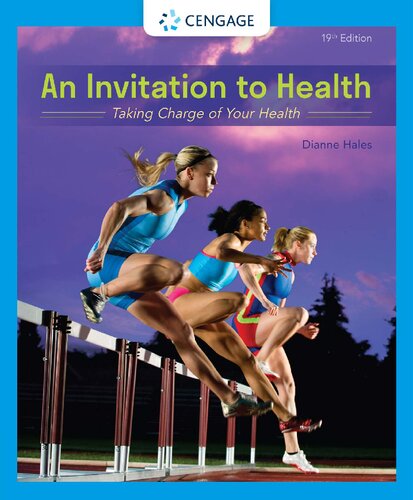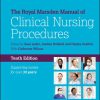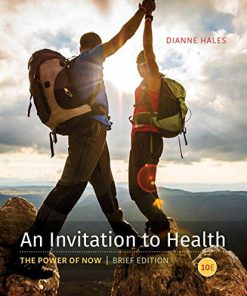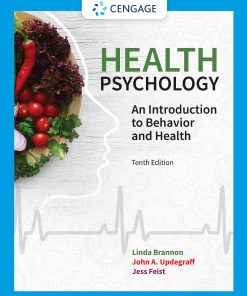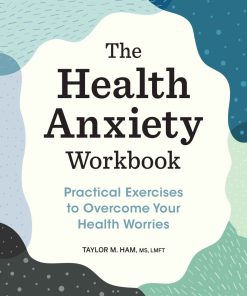An Invitation to Health: Taking Charge of Your Health 19th Edition by Dianne 9780357136799 0357136799
$50.00 Original price was: $50.00.$25.00Current price is: $25.00.
An Invitation to Health: Taking Charge of Your Health 19th Edition Dianne Hales – Ebook Instant Download/Delivery ISBN(s): 9780357136799,0357136799

Product details:
- ISBN 10:0357136799
- ISBN 13: 9780357136799
- Author: Dianne
An Invitation to Health: Taking Charge of Your Health
Table contents:
About the Author
Chapter 1. Taking Charge of Your Health
Health and Wellness
The Dimensions of Health
Health in America
Healthy People 2020
Health Disparities
Sex, Gender, and Health
Health on Campus
College and Health
How Healthy Are Today’s Students?
The Future Starts Now
Student Health Norms
The Promise of Prevention
Protecting Yourself
Informing Yourself
Understanding Risky Behaviors
Making Healthy Changes
Understanding Health Behavior
How People Change
What Did You Decide?
Taking Charge of Your Health
Self-Survey
Review Questions
Chapter 2. Psychological and Spiritual Well-Being
Emotional and Mental Well-Being
The Lessons of Positive Psychology
Boost Self-Esteem
Develop Self-Compassion
Boost Emotional Intelligence
Meet Your Needs
Pursue Happiness
Become Optimistic
Manage Your Moods
Take Control
Develop Autonomy
Assert Yourself
Spiritual Health
Spirituality and Physical Health
Deepen Your Spiritual Intelligence
Clarify Your Values
Enrich Your Spiritual Life
Consider the Power of Prayer
Cultivate Gratitude
Forgive
Sleep and Health
Sleepless on Campus
What Happens When We Sleep?
How Much Sleep Do You Need?
Sleep’s Impact on Health
Getting a Better Night’s Sleep
Sleeping Pills
What Did You Decide?
Taking Charge of Your Health
Self-Survey
Review Questions
Chapter 3. Caring for Your Mind
The Brain: The Last Frontier
Inside the Brain
Sex Differences in the Brain
The Teenage and 20-Something Brain
Understanding Mental Health
What Is a Mental Disorder?
Mental Health on Campus
Depressive Disorders
Depression in Students
Gender and Depression
Major Depressive Disorder
Treating Depression
Bipolar Disorder
Anxiety Disorders
Specific Phobia
Panic Attacks and Panic Disorder
Generalized Anxiety Disorder
Other Common Disorders
Obsessive–Compulsive Disorder
Attention-Deficit/Hyperactivity Disorder
Autism Spectrum Disorder
Schizophrenia
Self-Injury and Suicide
Suicide on Campus
Risk Factors
Overcoming Problems of the Mind
Self-Care Strategies
Where to Turn for Help
Types of Therapists
Choosing a Therapist
Types of Therapy
Other Treatment Options
What Did You Decide?
Taking Charge of Your Health
Self-Survey
Review Questions
Chapter 4. Stress Management
What Is Stress?
Eustress, Distress, and Neustress
Stress and the Dimensions of Health
Types of Stressors
Stress in America
Stress on Campus
Stress and Student Health
Other Stressors
Financial Stress
Occupational Stress
Burnout
Illness and Disability
Traumatic Life Events
Acute Stress Disorder
Posttraumatic Stress Disorder
Inside Stress
General Adaptation Syndrome
Fight or Flight
Freezing
Submission
Challenge Response Model
Tend-and-Befriend Model
Transactional or Cognitive-Relational Model
Yerkes-Dodson Law
The Impact of Stress
Stress and the Heart
Stress and Immunity
Stress and the Gastrointestinal System
Stress and Cancer
Other Stress Symptoms
Managing Stress
Journaling
Exercise
Routes to Relaxation
Meditation and Mindfulness
Yoga
Resilience
Stress Prevention: Taking Control of Your Time
Time Management
Overcoming Procrastination
Managing Your Money
Financial Homeostasis
Personal Finances 101
Your Credit Score
Banking Basics
Avoid Debit and Credit Card Stress
Digital Financial Management
Protect Your Private Information
What Did You Decide?
Taking Charge of Your Health
Self-Survey
Review Questions
Chapter 5. Personal Nutrition
Dietary Guidelines for Americans
The Building Blocks of Good Nutrition
Water
Protein
Carbohydrates
Fats
Vitamins
Minerals
Calories
Alcohol
Healthy Eating Patterns
MyPlate
The USDA Food Patterns
The DASH Eating Plan
The Mediterranean Diet
Vegetables and Fruits
Vegetarian Diets
Ethnic Cuisines
Campus Cuisine: How College Students Eat
Nutrition Knowledge
Fast Food: Eating on the Run
You Are What You Drink
Choosing Healthful Snacks
Taking Charge of What You Eat
Portions and Servings
Nutrition Labels
What Is an “Organic” Food?
Genetically Engineered Foods
Dietary Supplements
Food Safety
Fight BAC!
Avoiding E. Coli Infection
Food Poisoning
Pesticides
Food Allergies
Nutritional Quackery
What Did You Decide?
Taking Charge of Your Health
Self-Survey
Review Questions
Chapter 6. Weight Management and the Obesity Epidemic
Obesity in America
Weight on Campus
Body Composition
Body Mass Index
Waist Circumference
Waist-to-Hip Ratio
Measuring Body Fat
Understanding Weight Problems
How Did So Many Get So Fat?
Health Dangers of Excess Weight
The Impact on the Body
The Emotional and Social Toll
If You’re Too Thin: How to Gain Weight
A Practical Guide to a Healthy Weight
Understanding Why We Overeat
Preventing Weight Gain
Weight Loss Diets
Do Weight Loss Programs Work?
Physical Activity and Exercise
Complementary and Alternative Medicine for Obesity
Common Diet Traps
Maintaining Weight Loss
Treating Severe Obesity
Obesity Medications
Obesity Surgery
Unhealthy Eating on Campus
Body Image
“Fat Talk”
Disordered Eating
Extreme Dieting
Compulsive Overeating
Binge Eating
Eating Disorders
Anorexia Nervosa
Bulimia Nervosa
What Did You Decide?
Taking Charge of Your Health
Self-Survey
Review Questions
Chapter 7. Physical Activity and Fitness
The Dangers of Inactivity
Physical Activity and Fitness
Fitness and the Dimensions of Health
Working Out on Campus
Physical Activity and Exercise
The Benefits of Exercise
Exercise Risks
Physical Activity Guidelines for Americans
How Much Exercise Is Enough?
Your Exercise Prescription
The Principles of Exercise
Overload Principle
FITT
Reversibility Principle
Improving Cardiorespiratory Fitness
Monitoring Exercise Intensity
High-Tech Gadgets
Nontech Methods
Designing an Aerobic Workout
Your Long-Term Fitness Plan
Aerobic Options
Building Muscular Fitness
Muscles at Work
Designing a Muscle Workout
Recovery
Core Strength Conditioning
Muscle Dysmorphia
Drugs Used to Boost Athletic Performance
Becoming More Flexible
The Benefits of Flexibility
Stretching
Mind-Body Approaches
Yoga
Pilates
T’ai Chi
Keeping Your Back Healthy
Evaluating Fitness Products and Programs
Exercise Equipment
Athletic Shoes
Barefoot Running and Alternative Running Shoes
Fitness Centers
Sports Nutrition
Water
Sports Drinks
Dietary Supplements
Energy Bars
Safe and Healthy Workouts
Temperature
Exercise Injuries
What Did You Decide?
Taking Charge of Your Health
Self-Survey
Review Questions
Chapter 8. Communicating and Connecting
The Social Dimension of Health
Communicating
Learning to Listen
Being Agreeable but Assertive
How Men and Women Communicate
Nonverbal Communication
Forming Relationships
Friendship
Loneliness
Shyness and Social Anxiety Disorder
Building a Healthy Community
Doing Good
Living in a Wired World
Social Networking on Campus
Self-Disclosure and Privacy in a Digital Age
Digital Dating
Problematic Smartphone and Internet Use
Loving and Being Loved
Intimate Relationships
What Attracts Two People to Each Other?
Infatuation
The Science of Romantic Love
Mature Love
Dysfunctional Relationships
Intimate Partner Violence
Emotional Abuse
Codependency
When Love Ends
Partnering across the Lifespan
The New Transition to Adulthood
Cohabitation
Long-Term Relationships
Marriage
Issues Couples Confront
Divorce
Family Ties
Diversity within Families
Unmarried Parents
What Did You Decide?
Taking Charge of Your Health
Self-Survey
Review Questions
Chapter 9. Sexual Health
Sexual Health
Sexuality and the Dimensions of Health
Biological Sex
How Hormones Work
Women’s Sexual Health
Female Sexual Anatomy
The Menstrual Cycle
Men’s Sexual Health
Male Sexual Anatomy
The Gender Spectrum
Responsible Sexuality
Creating a Sexually Healthy Relationship
Making Sexual Decisions
Saying No to Sex
Sexual Behavior
Sexual Initiation: “Having Sex” for the First Time
Sex on Campus
Hooking Up
Friends with Benefits
Choosing Sexual Partners
Romantic Relationships
Ethnic Variations
Sex in America
Sexual Diversity
Heterosexuality
Bisexuality
Homosexuality
Sexual Activity
Celibacy
Abstinence
Fantasy
Pornography
Masturbation
Nonpenetrative Sexual Activity (Outercourse)
Intercourse
Oral Sex
Anal Stimulation and Intercourse
Sexual Response
Sexual Concerns
Sexual Difficulties and Dysfunctions
Sex Therapy
Drugs and Sex
Atypical Behavior
The Business of Sex
What Did You Decide?
Taking Charge of Your Health
Self-Survey
Review Questions
Chapter 10. Reproductive Options
Reproductive Responsibility
Conception
Abstinence and Nonpenetrative Sexual Activity
Contraception
The Benefits and Risks of Contraceptives
Birth Control in America
Reproductive Coercion
Contraception Choices
Birth Control on Campus
Hormonal Contraceptives
Oral Contraceptives
Long-Acting Oral Contraceptives
Contraceptive Patch
Contraceptive Vaginal Ring
Long-Acting Reversible Contraceptives
Intrauterine Device
Contraceptive Injection
Contraceptive Implant
Barrier Contraceptives
Condoms
Contraceptive Sponge
Vaginal Spermicides and Film
Diaphragm
Cervical Cap
Femcap
Fertility Awareness and Digital Birth Control
Digital Birth Control
Emergency Contraception
Sterilization
When Pregnancy Occurs
Unwanted Pregnancy
Abortion
Pregnancy
Preconception Care
Home Pregnancy Tests
Prenatal Care
A Woman’s Bodily Changes During Pregnancy
Neonatal Development
Complications of Pregnancy
Childbirth
Infertility
Options for Infertile Couples
Transgender Individuals
Adoption
What Did You Decide?
Taking Charge of Your Health
Self-Survey
Review Questions
Chapter 11. Sexually Transmitted Infections
Sexually Transmitted Infections and Diseases
Zika Virus
Risk Factors for Sexually Transmitted Infections
Screening for Sexually Transmitted Infections
The Abcs of Safer Sex
A is for Abstain
B is for be Faithful
C is for Condoms
Stis and Gender
STIs on Campus
What College Students Don’t Know about STIs
Common STIs and STDs
Human Papillomavirus
Genital Herpes
Chlamydia
Pelvic Inflammatory Disease
Gonorrhea
Nongonococcal Urethritis
Syphilis
Chancroid
Pubic Lice and Scabies
Trichomoniasis
Bacterial Vaginosis
HIV and AIDS
Incidence
Who is at Risk?
Sexual Transmission
Nonsexual Transmission
Preventing HIV Infection
Recognizing and Treating HIV/AIDS
What Did You Decide?
Taking Charge of Your Health
Self-Survey
Review Questions
Chapter 12. Major Diseases
Your Cardiometabolic Health
Cardiometabolic Risk Factors
Risk Factors You Can Control
Risk Factors You Can’t Control
Metabolic Syndrome
Who is at Risk?
What are the Signs?
Diabetes
Insulin Resistance
Prediabetes
Diabetes Mellitus
Who is at Risk?
Types of Diabetes
Diabetes Management
Hypertension
Hypertension in the Young
Who is at Risk?
What Your Blood Pressure Reading Means
Lowering High Blood Pressure
Your Lipoprotein Profile
What is a Healthy Cholesterol Reading?
Lowering Cholesterol
Lifestyle Changes
Medications
Cardiovascular (Heart) Disease
How the Heart Works
Heart Risks on Campus
Psychosocial Risk Factors
Other Risk Factors
The Heart of a Woman
Coronary Artery Disease
Atherosclerosis
Heart Attack (Myocardial Infarction)
Stroke
Who is at Risk?
Types of Stroke
Silent Strokes
Transient Ischemic Attacks
The Effects of Stroke on the Brain
Cancer
Understanding Cancer
Who is at Risk?
Common Types of Cancer
Other Major Illnesses
Epilepsy and Seizure Disorders
Asthma
Ulcers
What Did You Decide?
Taking Charge of Your Health
Self-Survey
Review Questions
Chapter 13. Infectious Diseases
Understanding Infection
Agents of Infection
How Infections Spread
The Process of Infection
Who Develops Infections?
How Your Body Protects Itself
Immune Response
Immunity and Stress
Immunity and Gender
Immune Disorders
Autoimmune Disorders
Immunization
Childhood Vaccinations
Adult Vaccinations
Upper Respiratory Infections
Common Cold
Influenza
Meningitis
Preventing Meningitis
Recognizing Meningitis
When to Seek Medical Care
Hepatitis
Hepatitis A
Hepatitis B
Hepatitis C
Other Infectious Illnesses
Epstein-Barr Virus and Infectious Mononucleosis
Myalgic Encephalomyelitis/Chronic Fatigue Syndrome (ME/CFS)
Herpes Gladiatorum (Mat Herpes, Wrestler’s Herpes, Mat Pox)
Tuberculosis
The “Superbug” Threat: MRSA
Insect- and Animal-Borne Infections
Lyme Disease
West Nile Virus
Zika Virus
Avian Influenza
Emerging Infectious Diseases
SARS
Ebola
Smallpox
Reproductive and Urinary Tract Infections
Vaginal Infections
Urinary Tract Infections
What Did You Decide?
Taking Charge of Your Health
Self-Survey
Review Questions
Chapter 14. Consumer Health
Health Insurance
The Affordable Care Act
How Health Insurance Works
What You Need to Know
Consumer-Driven Health Care
Evidence-Based Medicine
Outcomes Research
Personalizing Your Health Care
Your Family Health History
Gender Differences
Mobile Health (mHealth) Apps and Monitors
Self-Care
Oral Health
Becoming a Savvy Health-Care Consumer
Making the Most of a Medical Visit
Talking with Your Health-Care Provider
After Your Visit
Preventing Medical Errors
Your Medical Rights
Your Right to Be Treated with Respect and Dignity
Your Right to Information
Your Right to Privacy and Access to Medical Records
Your Right to Quality Health Care
Elective Treatments
Vision Surgery
Cosmetic Surgery
Body Art Perils
Health Hoaxes and Medical Quackery
Nontraditional Health Care
Types of CAM
The Health-Care System
Health-Care Practitioners
Health-Care Facilities
What Did You Decide?
Taking Charge of Your Health
Self-Survey
Review Questions
Chapter 15. Addictive Behaviors and Drugs
Understanding Addiction
Addiction and the Dimensions of Health
Preventing Addictions
Gambling and Behavioral Addictions
Problem Gambling
Gambling Disorder
Gambling on Campus
Risk Factors for Problem Gambling
Drug Use on Campus
Why Students Don’t Use Drugs
Why Students Use Drugs
Understanding Drugs and Their Effects
Routes of Administration
Dosage and Toxicity
Individual Differences
Gender and Drugs
Setting
Types of Action
Interaction with other Drugs or Alcohol
Caffeine and Its Effects
Caffeine Intoxication
Caffeine-Containing Energy Drinks
Medications
Over-the-Counter Drugs
Prescription Drugs
Substance Use Disorders
Dependence
Misuse
Intoxication and Withdrawal
Polyabuse
Coexisting Conditions
Causes of Substance Use Disorders
The Opioid Epidemic
How the Epidemic Started
The Impact of the Epidemic
Who is at Risk?
Recovery
Prescription Drug Abuse
Prescription Drugs on Campus
Prescription Stimulants
Prescription Painkillers
Commonly Abused Drugs
Cannabinoids
CBD
Herbal Drugs
Synthetic Designer Drugs
Club Drugs
Stimulants
Depressants
Hallucinogens
Dissociative Drugs
Inhalants
Treatment of Substance Dependence and Misuse
Principles of Drug Addiction Treatment
12-Step Programs
Relapse Prevention
What Did You Decide?
Taking Charge of Your Health
Self-Survey
Review Questions
Chapter 16. Alcohol
Drinking in America
Why People Don’t Drink
Why People Drink
Drinking on Campus
Why Students Don’t Drink
Why Students Drink
High-Risk Drinking on Campus
Why Students Stop Drinking
Alcohol-Related Problems on Campus
Drinking and Driving
Understanding Alcohol
Blood-Alcohol Concentration
Moderate Alcohol Use
Alcohol Intoxication
Alcohol Poisoning
The Impact of Alcohol on the Body
Digestive System
Weight and Waists
Cardiorespiratory System
Cancer
Brain and Behavior
Interaction with Other Drugs
Immune System
Health Problems Later in Life
Increased Risk of Dying
Alcohol, Gender, and Race
Gender
Race
Alcohol-Related Disorders
Alcohol Use Disorder
Causes
Medical Complications
Alcoholism Treatments
Recovery
Alcoholism’s Impact on Relationships
Growing Up with an Alcoholic Parent
Adult Children of Alcoholics
What Did You Decide?
Taking Charge of Your Health
Self-Survey
Review Questions
Chapter 17. Tobacco
Tobacco Use in America
Why People Smoke
Tobacco Use Disorder
Tobacco Use on Campus
Social Smoking
College Tobacco-Control Policies
Smoking, Gender, and Race
Tobacco’s Immediate Effects
How Nicotine Works
Tar and Carbon Monoxide
Health Effects of Cigarette Smoking
Health Effects on Students
Premature Death
Heart Disease and Stroke
Cancer
Respiratory Diseases
Other Smoking-Related Problems
E-Cigarettes and Vaping
Other Forms of Tobacco
Water Pipes (Hookahs)
Cigars and Pipes
Bidis
Clove Cigarettes (Kreteks)
Smokeless Tobacco
Snus
Quitting Tobacco Use
Physical Benefits of Quitting
Psychological Benefits of Quitting
Quitting on Your Own
Virtual Support
Stop-Smoking Groups
Nicotine Replacement Therapy (NRT)
Nicotine Gum
Nicotine Patches
Nicotine Inhaler
Electronic Cigarettes
Medications and Other Treatments
Combined Treatments
Quitting and the Risks Associated with Smoking
Environmental Tobacco Smoke
Health Effects of Secondhand Smoke
Thirdhand Smoke
The Fight for Clean Air
What Did You Decide?
Taking Charge of Your Health
Self-Survey
Review Questions
Chapter 18. Personal Safety
Unintentional Injury
Why Accidents Happen
Safety on the Road
Avoid Distracted Driving
Don’t Text or Talk
Stay Alert
Buckle Up
Check for Air Bags
Rein in Road Rage
Cycle Safely
Safety at Work and at Home
Computers and Your Health
At Home
Which Gender Is at Greater Risk?
Violence in America
Gun Violence
Mass Shootings
A Public Health Approach
Violence and Crime on Campus
Hazing
Hate or Bias Crimes
Microaggressions
Campus Shootings
Consequences of Campus Violence
Sexual Victimization and Violence
Sexual Violence against Women
Cyberbullying and Sexting
Sexual Harassment
Stalking
Intimate Partner (Dating) Violence
Rape
Sexual Assault on Campus
Changing the Campus Culture
#MeToo
Sexual Coercion
Incapacitated Sexual Assault and Date-Rape Drugs
Rape on Campus
Helping the Victims of Violence
What Did You Decide?
Taking Charge of Your Health
Self-Survey
Review Questions
Chapter 19. A Healthier Environment
The Environment and Your Health
Climate Change
Global Warming
The Health Risks
The Impact of Pollution
The Air You Breathe
Ozone
Particle Pollution
Green Space
Working toward Sustainability
The Water You Drink
Is Bottled Water Better?
Portable Water Bottles
Indoor Pollutants: The Inside Story
Environmental Tobacco Smoke
Radon
Molds and other Biological Contaminants
Household Products
Formaldehyde
Pesticides
Asbestos
Lead
Carbon Monoxide and Nitrogen Dioxide
Chemical Risks
Agricultural Pesticides
Chemical Weapons
Multiple Chemical Sensitivity
Invisible Threats
Electromagnetic Fields
Cell Phones
Microwaves
Ionizing Radiation
Diagnostic X-Rays
Your Hearing Health
How Loud Is That Noise?
Effects of Noise
Are Earbuds Hazardous to Hearing?
Hearing Loss
What Did You Decide?
Taking Charge of Your Health
Self-Survey
Review Questions
Chapter 20. A Lifetime of Health
Quality and Quantity of Life
Will You Live to 50?
Aging Well
Physical Activity: It’s Never Too Late
Nutrition and Obesity
The Aging Brain
Women at Midlife
Men at Midlife
Sexuality and Aging
The Challenges of Age
Mild Cognitive Impairment
Alzheimer’s Disease
Osteoporosis
Preparing for Medical Crises and the End of Life
Advance Directives
Ethical Dilemmas
The Gift of Life
Death and Dying
Death Literacy and Education
Defining Death
Denying Death
Emotional Responses to Dying
How We Die
A “Good” Death
Caregiving
Hospice: Caring When Curing Isn’t Possible
Near-Death Experiences
Suicide
“Rational” Suicide
Euthanasia and Assisted Suicide
Right-to-Die Laws
The Practicalities of Death
Funeral Arrangements
Autopsies
Grief
Grief’s Impact on Students
Grief’s Effects on Health
What Did You Decide?
Taking Charge of Your Health
Self-Survey
Review Questions
People also search:
an invitation to health: taking charge
invitation to health fees
an invitation to health 19th edition
an invitation to health taking charge of your health
an invitation to health book
You may also like…
Relationships & Lifestyle - Health - Diseases & Disorders
Psychology - Psychological Disorders
Politics & Philosophy - Sociology
An Invitation to the Sociology of Emotions, 2nd Edition Scott R. Harris 1032474157 9781003846666
Mathematics - Combinatorics
History - American Studies
Land of Hope An Invitation to the Great American Story Wilfred M Mcclay
Mathematics - Algebra
An Invitation to Abstract Algebra 1st Edition Steven J Rosenberg
Uncategorized

